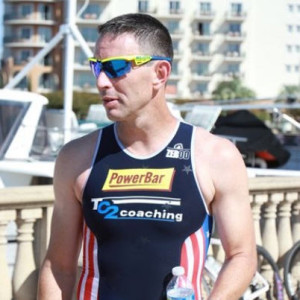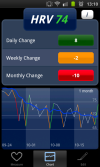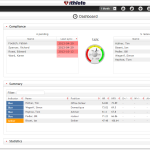By Tim Crowley
I have been using heart rate variability in my own training for nearly 2 years. For the past year I have been using it with many of my athletes. This number is steadily increasing and by end of this year I will make HRV a requirement for all athletes I coach.
The reason I believe HRV measurement is critical for athletes is that I am able to get all of their stress reactions into one number on a consistent daily basis. Add to this the ease-of-use in the ability to get all of the athlete’s information in one place using the ithlete Team App is a game changer in my mind. I no longer have to guess or assume the fatigue and /or stress level of the athlete.
I believe those athletes and coaches using HRV are on the cutting edge of training and learning how each individual adapts not only to training stress but to the other stressors in their life. This is a critical piece of information, from which all training decisions should be made. Great coaches are going to be using HRV as a way of maximizing the athletes training, while minimizing the risk of overuse, burnout or illness.
I have been coaching athletes with GPS devices for running and power meters for cycling for over 15 years. I can quantify the training stresses on a daily, weekly an annual basis through the use of programs such as WKO+. I then wanted to find a way to measure recovery status. This led me to the use of sleep monitors such as Zeo. After a few years of accumulating data from this sleep information, I found it difficult to distinguish between a good sleep score signifying recovery, versus one that showed excessive fatigue. I am still a big advocate of sleep monitors; I just needed a better tool to measure stress levels too.
It was at that time I was first made aware of heart rate variability. I’m fortunate enough that several of the age group athletes that I coach are physicians. I was able to to talk with them and find out and learn quickly if HRV was a viable tool for measuring the body stress response. Once I realized it was, I knew it would be a valuable coaching tool.
The ease of collecting the data with the ithlete app makes getting the information simple, and once compared with training load it was easy to start to see patterns forming within each individual athlete. Once it became apparent that training stress, environmental stress, life stress, and work stress all had an influence of the body’s ability to adapt, the power of HRV really became clear.
The next big breakthrough came in looking at how I see an athlete adapted to hard workouts, the taper, and the recovery post race. I could now periodize training based on each athlete’s rate of adaptation. More importantly, I could be proactive in adjusting training loads as needed for success.
Here are some of the ways that I’m currently using the HRV and both my own training and those of the athletes I coach.
Training is individualized
Over time the HRV measurement matched up with training load will give me a better idea of how the individual responds to different types of quality and quantity and how we can best set up their training week to make sure that they are recovered and ready for the next key session. You’ll see that this may vary widely from athlete athletes and across different age groups.
Race week
Although I like to keep it consistent from race to race by monitoring the HRV we can maximize the athlete’s ability to show up on the start line fully ready to give their best efforts.
This became very evident a few weeks ago with a young collegiate athlete I was preparing for Long Course Duathlon National Championships. The typical taper that we were using was still showing a very low HRV score mid-week. I was able to adjust his training loads and monitor daily so that we could optimize his readiness to compete. Consequently he was able to put out a very good race effort and became national champion in his age group.
Post race
It is sometimes hard to guess the recovery rate after a particular event. This can vary between the effort the athlete puts out, as well as the demands of the course, and temperature and weather conditions. By monitoring HRV in the days after the race, we can make sure the athlete has fully adapted and recovered from the event before we start the next block of hard training. This ensures maximum adaptation and minimizes the risk of overuse injuries or illness
Daily adjustments
 Using ithlete allows me to make daily adjustments. One rule I have is if an athlete takes his/ her HRV and it shows up either Amber or Red the next thing they to do is to immediately text or email me with the color. I can then make daily changes to their training plan to ensure optimal workload and recovery.
Using ithlete allows me to make daily adjustments. One rule I have is if an athlete takes his/ her HRV and it shows up either Amber or Red the next thing they to do is to immediately text or email me with the color. I can then make daily changes to their training plan to ensure optimal workload and recovery.
If they have a scheduled quality session we might move that to another day and alter the week. By prioritizing the key workouts and making sure the athlete can handle them builds both fitness and confidence in themselves and the program.
ithlete Team App
 I recently began utilizing the ithlete Team App, which in my opinion is a game changer. The ability to have all of your athletes HRV data at your fingertips is absolutely critical for success. I can easily see which athletes are showing white, blue, amber or red and make the changes to their training plan immediately. I’ve only been using the team at for a couple weeks, but am seeing how it is making me more efficient, plus the athletes compliance to taking the measurement and uploading the data has increased.
I recently began utilizing the ithlete Team App, which in my opinion is a game changer. The ability to have all of your athletes HRV data at your fingertips is absolutely critical for success. I can easily see which athletes are showing white, blue, amber or red and make the changes to their training plan immediately. I’ve only been using the team at for a couple weeks, but am seeing how it is making me more efficient, plus the athletes compliance to taking the measurement and uploading the data has increased.
As I continue to use HRV on a daily basis I have found that it opens up communication with the athlete as to what the numbers mean and how their training, sleep and life stress are all interconnected. I’m very excited to see in the coming months as more athletes are using this and I’m able to get more information exactly what new ways we can use the data to create healthier and better performing athletes while at the same time increasing their health and their enjoyment of sport.
By Tim Crowley
Tim Crowley is a USAT Level lll coach, and was a member of the 2008 US Olympic Coaching staff. He is the 2009 US Elite Coach of the Year, as well as the 2007 US Development Coach of The Year. Tim is the owner of TC2 Coaching LLC and is the Head Strength and Conditioning Coach at Montverde Academy in Florida.

very good tapic.